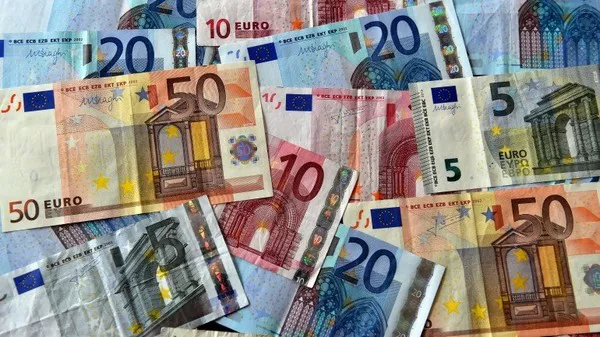The European debt crisis, also known as the Eurozone crisis, was a period of financial instability that began in 2009 and impacted several countries in the European Union (EU). The crisis was caused by a combination of factors, including high levels of government debt, weak economic growth, and fragile banking systems. In this article, we’ll explore the causes, consequences, and responses to the European debt crisis.
Causes of the European debt crisis
One of the main causes of the European debt crisis was the global financial crisis of 2008. As the US housing market collapsed, it triggered a worldwide recession that hit Europe particularly hard. Many countries in the EU, such as Greece, Portugal, Spain, and Ireland, had already been running large budget deficits and accumulating high levels of debt before the financial crisis. When the recession hit, these countries were left with even lower tax revenues and higher spending on social welfare programs, which worsened their fiscal positions.
In addition to the impact of the global financial crisis, there were also fundamental flaws in the design of the Eurozone that contributed to the debt crisis. One key issue was the lack of a common fiscal policy among Eurozone member states. While they shared a single currency, each country retained control over its own budget and taxation policies. This meant that some countries were able to run up large debts without facing the same market pressures as others.
Another problem was the uneven distribution of economic competitiveness across the Eurozone. Some countries, such as Germany, had strong export industries and relatively low labor costs, while others, such as Greece and Portugal, struggled with high unemployment and low productivity. This created imbalances within the Eurozone that made it difficult for weaker economies to compete and maintain sustainable growth.
Consequences of the European debt crisis
The European debt crisis had severe consequences for both the affected countries and the broader Eurozone economy. Many countries, such as Greece, Portugal, and Ireland, were forced to seek financial assistance from the European Union, the International Monetary Fund (IMF), and other lenders to avoid defaulting on their debt.
In exchange for this assistance, these countries had to implement deep austerity measures, including cuts to public spending and higher taxes. This led to widespread protests and social unrest, as citizens faced job losses, wage cuts, and reduced access to public services.
The crisis also had wider implications for the Eurozone as a whole. The uncertain economic outlook and high levels of government debt made investors increasingly wary of lending to Eurozone countries, which led to higher borrowing costs. This created a vicious cycle where high borrowing costs made it even harder for countries to service their debts, leading to further market anxiety and higher costs.
Responses to the European debt crisis
The European Union and its member states took several steps to try to address the causes and consequences of the debt crisis. In 2010, the European Financial Stability Facility (EFSF) was established to provide financial assistance to countries in need. The EFSF could lend up to €440 billion to countries facing economic difficulties, with the loans provided on the condition that recipient governments implemented austerity measures and structural reforms.
In addition to the EFSF, the European Central Bank (ECB) played a key role in responding to the crisis. In 2012, ECB President Mario Draghi pledged to do “whatever it takes” to preserve the Eurozone, announcing a program of unlimited government bond purchases known as Outright Monetary Transactions (OMT). This helped to calm market fears and reduce borrowing costs for struggling Eurozone countries.
Finally, there have been efforts to strengthen the governance of the Eurozone in response to the crisis. One notable example is the creation of the European Stability Mechanism (ESM), which replaced the EFSF in 2012. The ESM is a permanent institution that can lend up to €500 billion to support Eurozone countries in need.
What can we learn from the European debt crisis?
1. The importance of fiscal discipline: One of the main drivers of the European debt crisis was the high levels of public debt accumulated by many countries in the region. This highlighted the need for governments to exercise greater fiscal discipline, particularly in relation to managing their budgets and reducing deficits.
2. The impact of economic imbalances: Another factor that contributed to the crisis was the large economic imbalances between different countries in Europe. For example, some countries had large trade surpluses while others had large trade deficits. These imbalances made it difficult for some countries to compete in the global economy and led to significant disparities in wealth and living standards across the region.
3. The limitations of monetary policy: During the crisis, the European Central Bank (ECB) implemented a range of monetary policies to try and stimulate economic growth and address the debt crisis. However, these policies were only partially effective due to factors such as political resistance, legal barriers, and institutional constraints.
4. The importance of international cooperation: The European debt crisis highlighted the need for greater international cooperation in addressing economic challenges and promoting financial stability. For example, the establishment of the European Stability Mechanism (ESM) was a major step towards creating a more coordinated approach to managing financial crises in Europe.
Conclusion
The European debt crisis was a complex and challenging period for the European Union and its member states. While there were many contributing factors, including the global financial crisis and flaws in the design of the Eurozone, the crisis ultimately exposed deep-seated economic and social issues across Europe.
Although the crisis has largely receded from the headlines in recent years, it continues to have lasting impacts on the economies and societies of the affected countries. As the EU looks to the future, it will need to address these underlying issues if it hopes to build a stronger and more resilient economic union.


